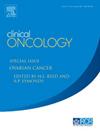Quality Indicators and Benchmarks for Radiotherapy in Lung Cancer: A Modified Delphi Approach
IF 3
3区 医学
Q2 ONCOLOGY
引用次数: 0
Abstract
Aims
While there are many published quality indicators (QIs) for assessing clinical care in lung cancer, few specifically measure the quality of radiotherapy (RT). To address this gap, we used a structured modified Delphi technique to develop a core set of QIs and benchmarks to evaluate RT processes for lung cancer treatment.
Materials and methods
Candidate QIs identified from the systematic review were evaluated through survey consensus and deliberation by a multidisciplinary reference committee for inclusion in the initial survey and then after each round. A modified Delphi technique was employed across two rounds to reach consensus for QI development. The international expert survey panel consisting of radiation oncologists treating lung cancer rated QI importance, feasibility, and benchmarks, with consensus predefined as at least 70% of respondents reaching a threshold rating on a Likert scale.
Results
There were 70 respondents over two surveys, with 30 of the 47 QIs reaching the threshold for importance in the first Delphi round and 29 after the final Delphi round. Agreement ranged from 71% to 97% with 12 QIs reaching a consensus of 90% or more. Final consensus was reached as all 29 QIs were identified as feasible, and 27 of the suggested benchmarks were deemed acceptable.
Conclusion
This core set of QIs provides a well-defined framework for evaluating RT processes in lung cancer treatment. They have the potential to establish a foundation for standardised quality measurement and benchmarking for guiding quality improvement efforts and improving patient outcomes.
肺癌放射治疗的质量指标和基准:一种改进的德尔菲法
虽然有许多已发表的质量指标(QIs)用于评估肺癌的临床护理,但很少有专门衡量放射治疗(RT)质量的指标。为了解决这一差距,我们使用了结构化的改进德尔菲技术来开发一套核心的QIs和基准来评估肺癌治疗的RT过程。材料和方法从系统综述中确定的候选QIs由多学科参考委员会通过调查共识和审议进行评估,以纳入初始调查,然后在每轮调查之后。采用改进的德尔菲技术在两轮中对QI发展达成共识。由治疗肺癌的放射肿瘤学家组成的国际专家调查小组对QI的重要性、可行性和基准进行了评级,并预先达成共识,至少70%的受访者达到了李克特量表的阈值评级。结果两次调查共有70名受访者,47个QIs中有30个在第一轮德尔菲中达到重要性阈值,29个在最后一轮德尔菲中达到重要性阈值。一致性范围从71%到97%,其中12个QIs达到90%或更高的共识。最终达成共识,所有29个质量指标都被确定为可行,27个建议基准被认为是可接受的。结论:这套核心的QIs为评估肺癌治疗的RT过程提供了一个明确的框架。它们有可能为指导质量改进工作和改善患者结果的标准化质量测量和基准建立基础。
本文章由计算机程序翻译,如有差异,请以英文原文为准。
求助全文
约1分钟内获得全文
求助全文
来源期刊

Clinical oncology
医学-肿瘤学
CiteScore
5.20
自引率
8.80%
发文量
332
审稿时长
40 days
期刊介绍:
Clinical Oncology is an International cancer journal covering all aspects of the clinical management of cancer patients, reflecting a multidisciplinary approach to therapy. Papers, editorials and reviews are published on all types of malignant disease embracing, pathology, diagnosis and treatment, including radiotherapy, chemotherapy, surgery, combined modality treatment and palliative care. Research and review papers covering epidemiology, radiobiology, radiation physics, tumour biology, and immunology are also published, together with letters to the editor, case reports and book reviews.
 求助内容:
求助内容: 应助结果提醒方式:
应助结果提醒方式:


